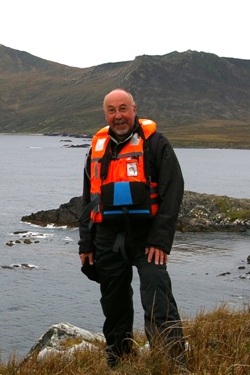 Join Council!
Join Council!
Would you consider standing for election to Council? Executive Secretary Edmund Nickless issues the annual call for nominations.
Geoscientist 22.09 October 2012
Are you willing to contribute to the work of the Society not only by becoming a member of Council and one of its standing committees but also by serving on working groups and undertaking particular tasks between meetings?
Whatever your background and expertise in the geosciences, membership of Council enables you to influence the role of the Society in acting as a respected voice serving society and the geoscience profession.
Each of the 23 members of Council is a trustee of the Society, accountable to the Fellows and to other stakeholders and regulators, such as the Charity Commission. Trustees’ prime responsibility is to oversee the Society’s affairs and act prudently in the management of its financial resources.
Council meets five times a year, usually on a Wednesday. Four take place in the afternoon (14.00-17.00). Papers are circulated a week in advance. There is also a two-day residential meeting (early February) beginning in the afternoon and finishing mid-afternoon, the next day. Its purpose is to allow Council to discuss issues such as strategy, business planning etc.
All Council members serve on a standing committee – External Relations, Information Management, Finance and Planning, Science, Professional or Publications Management (PMC). These usually meet quarterly; though recently the PMC has developed the practice of having one virtual and three actual meetings.
From time to time all standing committees may establish short-lived working groups which could impose a further call on the time of Council members but in agreeing to stand for Council you should think of a time commitment of 8 to 10 days annually for ordinary members of Council.
If elected to Council you will play an active role formulating and delivering the Society's scientific and professional strategy, facilitating the communication of new scientific findings, engaging with and translating knowledge and expert advice to society, policy makers and government, and in certifying good practice in the geoscience professions and teaching.
- This month’s print mailing contains two nomination forms - one for the election of new Council members and the other for President-designate. Details of the process may be found on the forms and also in the ‘Governance’ section of the website. The closing date for nominations is 4 January 2013 and nominations will NOT be valid unless they are fully completed, signed and accompanied by a statement by the nominees.
- Please return to Professor Alan Lord, c/o Executive Secretary, The Geological Society, Burlington House, Piccadilly, London W1J 0BG.
Geoscience Academy 2012
From geophysics to palaeontology, there are many options for geology undergraduates. But what about school? Joe Mears reports.
At school, geology is rarely taught as a specialist subject. Students are often introduced to the subject as part of other science lessons, by teachers whose specialism lies in other fields.
With the help of BP, the Geoscience Education Academy (GEA) was launched by the Geological Society in 2010, to equip teachers with specialist tools for teaching geoscience as part of their science lessons.
“When I was at school, geology wasn’t taught” says BP Director of Geology Nev Jones. “I had a teacher who saw something in me and helped me study it. There must still be hundreds of students out there like me, who need to be pointed in the direction of geoscience.”
Residential
The five-day residential course aims to provide teachers with a variety of tools for communicating geoscience, as well as an understanding of the careers available. Though places are limited, the learning material is designed to be passed on to other teachers, and support continues long after the GEA is over thanks to the Society’s Schools Affiliate Scheme, Schools Geology Competition and Earth Science Week. In this way, the GEA has reached a staggering number of students across the UK.
As well as financial support, BP provides a chance for teachers to experience first-hand what goes on behind the scenes at the company. At BP’s Sunbury offices, they learn the complexities of how oil is found, handle core samples and meet geoscience graduates at the beginnings of their careers.
Participants also visit the Natural History Museum to see the same equipment used in a very different way, find out about research careers, and handle incredible specimens. All this builds a picture of where their own students can fit into the future of the geosciences.
“The visits were an eye-opener to me” says James Salmon, a biology teacher who attended GEA 2011. “The ambience of the course was wonderful; fast-paced, demanding and provoking.”
Book now
The next GEA is on 19 – 24 October, and forms part of the Society’s continued efforts to develop and expand its educational activities.
The newest addition to its armoury is the Plate Tectonics online resource , launching this autumn, with funding from Centrica. “This fantastic new addition to our teaching aids is aimed at key-stage 4 students, but our experience indicates it will also be used by university students, the media, and those with a general interest in the subject” says Judi Lakin, GSL Education Officer, who has developed the resource with a team of writers. “The teachers at GEA will be some of the first to use the resource and we can’t wait to hear their feedback!”
- The theme of this year’s Earth Science Week (15 – 19 October) is ‘Careers in Geoscience’, and will culminate with the third annual GEA. For further information: E: [email protected]